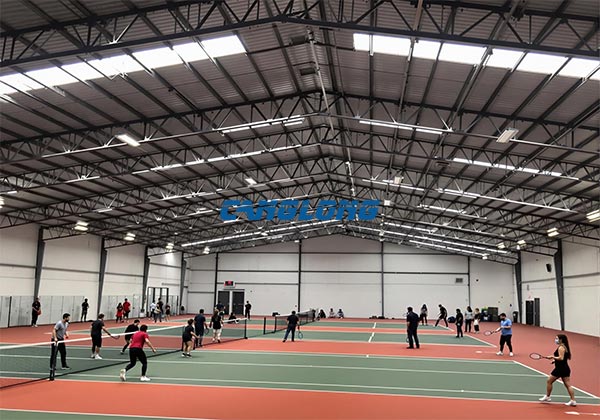Indoor Tennis Court
| Product Parameter | |
|---|---|
| Place of Origin: | Henan, China (Mainland) |
| Standard: | GB Standard, EU Standard, ASTM Standard |
| Certificates: | CE, ISO9001 |
| Grade: | Q235/Q355 |
| Brand Name: | Canglong Group |
| Type: | Steel Structure |
| Surface Treatment: | Antirust painted & Hot dip galvanized |
| Columns and Beams: | H-section Steel |
| Purlin: | C/Z-Shape Steel Channel |
| Roof and Wall Panel: | Metal Sandwich Panel, Color Steel Sheet |
Product Detail
The steel structure indoor tennis court is a purpose-built facility designed to provide a durable, weatherproof, and high-performance environment for year-round play. Engineered with precision, these courts leverage the strength and versatility of steel to deliver unmatched functionality and longevity.
Why Choose Steel Structure for Indoor Tennis Courts Construction?
Steel structure is the preferred material for constructing modern indoor tennis courts due to its unique properties:
High Strength-to-Weight Ratio: Steel structure supports large, column-free spans, creating unobstructed playing areas essential for professional-grade courts.
Rapid Construction: Prefabricated steel components allow faster assembly compared to traditional materials like concrete, minimizing downtime.
Durability: Resistant to corrosion, pests, and fire, steel ensures structural integrity even in humid or extreme climates.
Design Flexibility: Steel frames accommodate custom layouts, including varying ceiling heights, retractable roofs, or integrated spectator seating.
Cost Efficiency: Lower long-term maintenance costs and energy-saving potential (via insulation compatibility) make steel a financially sound choice.
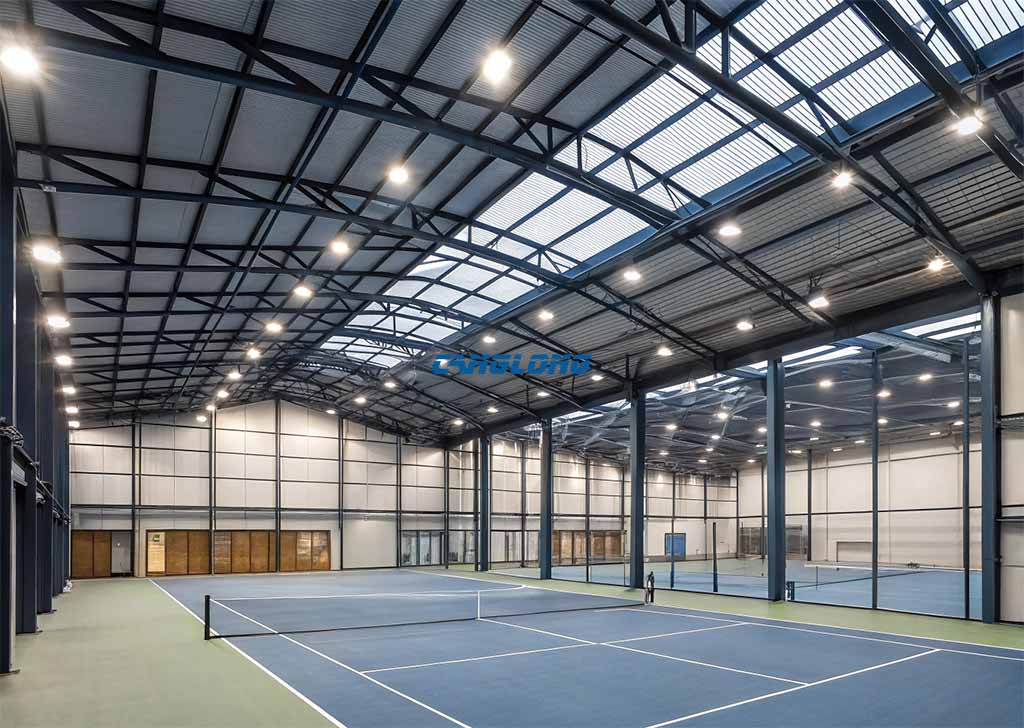
Primary Structural Materials
Steel Framework:
- Galvanized Steel Columns and Beams: Provide load-bearing support and resistance to rust.
- Truss Systems: Enable wide spans (up to 60+ meters) without intermediate supports.
Roofing and Wall Cladding:
- Insulated Metal Panels (IMPs): Combine thermal efficiency with durability.
- Polycarbonate or ETFE Membranes: Allow natural light transmission while blocking UV rays.
Flooring:
Professional-grade acrylic, artificial grass, or cushioned surfaces tailored to ITF standards.
Doors and Ventilation:
High-performance roll-up doors for equipment access; HVAC systems for air quality control.
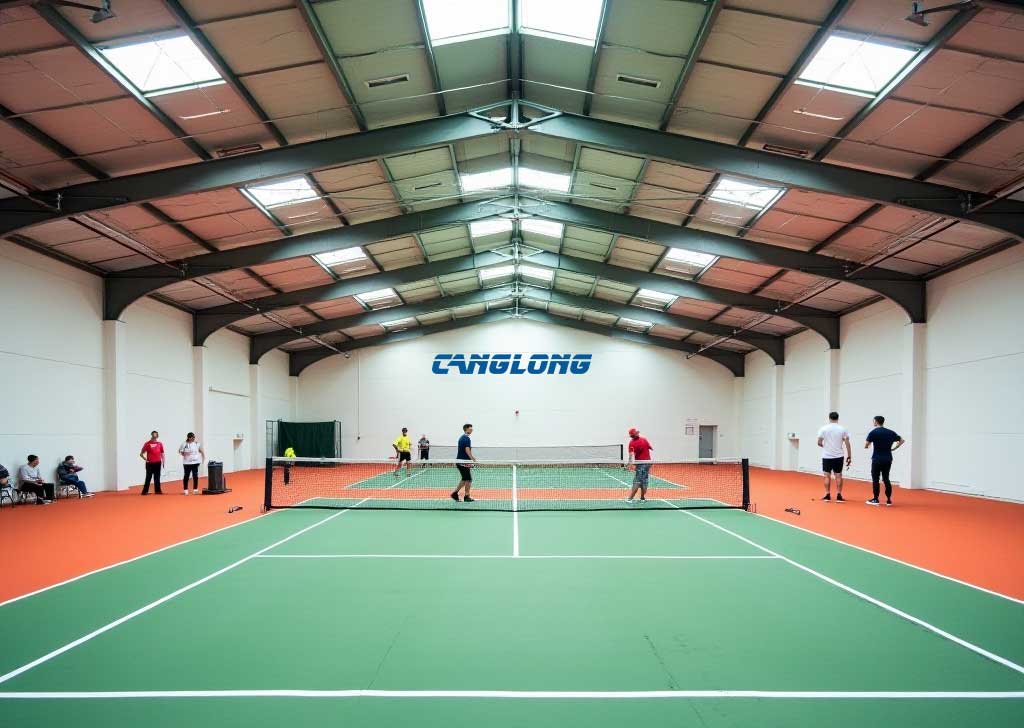
Advantages of Steel-Frame Indoor Tennis Court
- Year-Round Usability: Shield players from rain, wind, or excessive heat, enabling uninterrupted training and matches.
- Longevity: Steel structures last decades with minimal upkeep, reducing lifecycle costs.
- Quick ROI: Faster construction timelines mean facilities can open sooner, generating revenue earlier.
- Sustainability: Recyclable steel and energy-efficient designs align with green building standards.
- Scalability: Easily expandable to add more courts or amenities as demand grows.
Key Features
- Clear-Span Design: Eliminates interior columns, maximizing usable space for multiple courts or training zones.
- Climate Control: Insulated steel panels or composite roofing systems regulate temperature and humidity, ensuring optimal play conditions.
- Natural Lighting Integration: Options for skylights, translucent panels, or LED lighting systems reduce energy consumption while mimicking daylight.
- Acoustic Management: Sound-absorbing materials in walls and ceilings minimize echo, enhancing player focus and spectator comfort.
- Customizable Layouts: Add locker rooms, spectator stands, or multipurpose training areas within the steel framework.
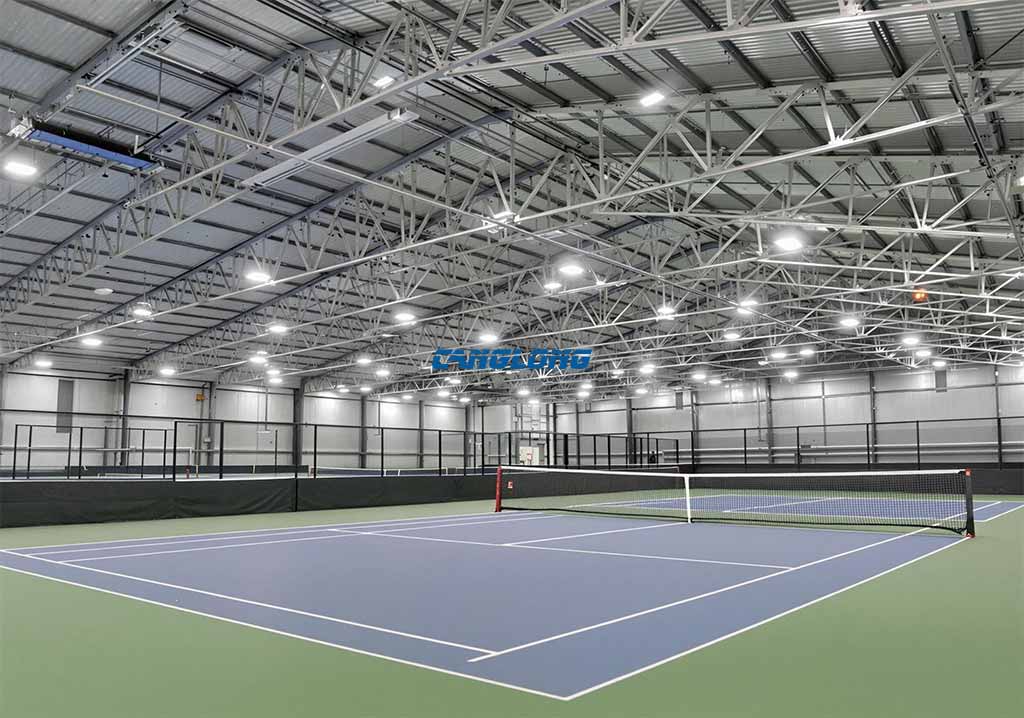
Applications of indoor tennis court
Steel structure indoor tennis courts serve diverse users:
- Sports Clubs: Premium memberships through all-season access.
- Schools/Universities: Support athletic programs regardless of weather.
- Professional Training Centers: Offer elite athletes consistent practice conditions.
- Residential Complexes: Enhance property value with private recreational facilities.
- Tournament Venues: Host events with controlled environments for fair play.
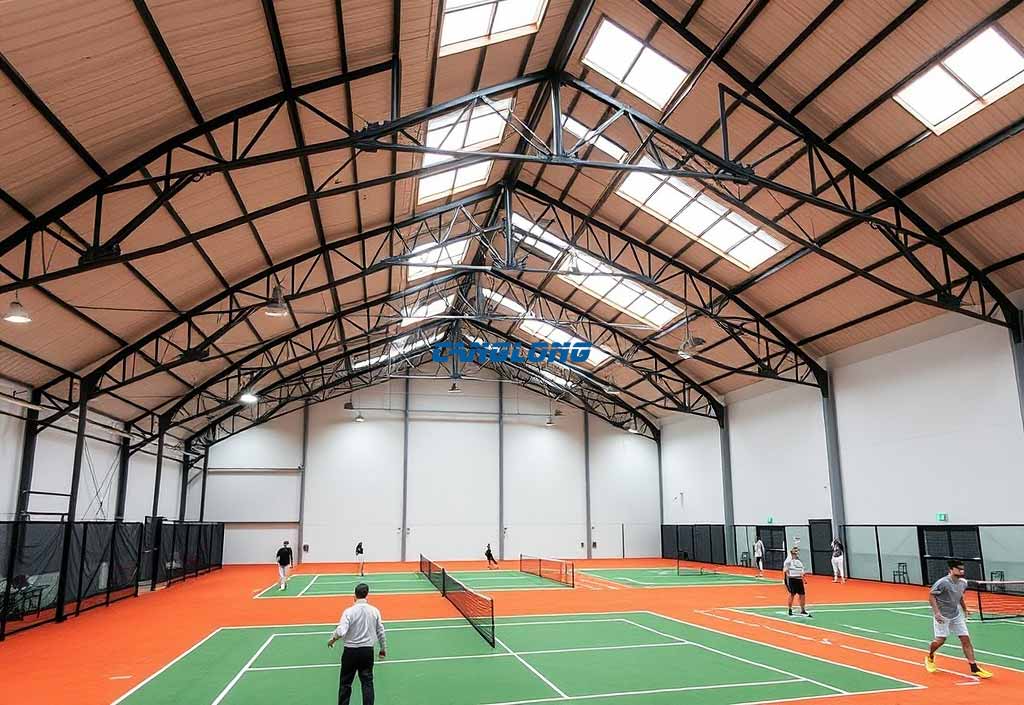
Conclusion
Steel structure indoor tennis court represents a smart investment in quality, performance, and sustainability. Its robust steel framework ensures safety and adaptability, while advanced cladding and climate systems create an ideal playing experience. Whether for competitive sports, community engagement, or commercial ventures, steel-built courts deliver a winning combination of durability, efficiency, and versatility—proving why modern sports infrastructure increasingly relies on steel.
